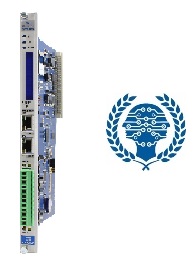
2500P-JACP Janus Application Coprocessor
The 2500P-JACP Janus Application Coprocessor is a general-purpose auxiliary controller that enhances the capabilities of all CTI 2500 Series® and SIMATIC® 505 PLC systems. This Advanced Function Module is based on Janus technology and includes high-speed processing and multi-protocol communications support to provide existing systems with a significant increase in performance, features, and functionality.
Because of its broad communications capabilities and ability to store large amounts of data on-board, the 2500P-JACP is ideal for Edge Computing applications, bringing computation and data storage closer to the location where it is needed, to improve response times and save bandwidth.
The 2500P-JACP runs as a PLC coprocessor performing complex logic/math functions, data logging, and communications with external devices. Although the 2500P-JACP can operate as a standalone controller, the control application generally requires data transfer between a host PLC and the module.
Two different data transfer options are provided:
Block Transfer Driver: The 2500P-JACP enables the user to configure the Block Transfer Driver which optimizes the exchange of up to 2048 data points with a Siemens, TI, or CTI PLC using the special function I/O backplane protocol. The application can select to exchange V, X/Y, WX/WY, or Control Relays for continuous Read or Read/Write. Note this feature allows the 2500P-JACP to be used with existing Simatic/TI 545 and 555 PLCs.
Data Cache: Proprietary link offering enhanced data throughput to CTI 2500 Series® controllers via a dedicated Ethernet connection. Supports up to 4096 variables mapped to any PLC memory type (including Loop/Alarm variables). The 2500P-JACP includes two external 10/100/1000Mb Ethernet ports with automatic detection of network speed, duplex mode, and cable wiring. An aliasing and isolation feature allows the two network ports to exist on two separate networks, a useful feature for isolating networks of drives or other I/O devices from the main plant communications network.
- 2500P-JACP Product Bulletin
- 2500P-JACP Quick Start Guide
- Installation and Operation Guide
- Product Revision History
- Firmware V.1.06